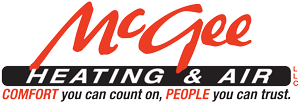Geothermal HVAC systems date back to the 1970s, but they have gained popularity in recent years. Unfortunately, there are several myths floating around about these revolutionary heating and cooling systems that cause homeowners in and around Anderson, SC, to misunderstand them. Read on to learn the truth behind six common geothermal HVAC myths.
Complicated Geothermal HVAC Installation
When people hear that geothermal HVAC systems can both heat and cool air thanks to an underground network of pipes, they typically assume that installation will be complex and laborious. However, a team of professionals can fully install a three-ton direct exchange pipe system, which would be enough to heat and cool a 2,000-square-foot home, in one to two days. Equivalent systems for larger homes may require somewhat more time, but not much more.
You Need a Large Yard
You don’t need to have a massive yard to accommodate the pipe loop that circulates a solution of water and coolant underground. HVAC professionals can install these loops according to a variety of different shapes and configurations. If you have a small yard, we will arrange the pipes vertically or diagonally so that they’ll fit deep underground beneath a relatively small surface area of land.
They Can’t Work in Urban Environments
Homeowners who live in urban neighborhoods often assume that they can’t have a geothermal HVAC system installed. However, this isn’t true. If sewage pipes and other underground infrastructure don’t allow you to bury your geothermal loop deep below ground in an urban setting, you can arrange to have the pipes buried horizontally across a wider area.
They Don’t Work in Especially Hot or Cold Environments
No matter what the above-ground climate is like, temperatures 10 to 20 feet underground tend to remain at around 50 degrees Fahrenheit year-round. That temperature is warmer than what prevails during the cold season and colder than what prevails during the warm season.
Therefore, regardless of the outdoor climate and the season, geothermal systems work effectively. These systems rely on the temperature differential between underground and above-ground areas to perform heat transfer. Since that temperature differential is consistent all throughout the year, it doesn’t matter whether you live far up north or far down south, whether the place you inhabit is especially hot or especially cold.
Geothermal HVAC Maintenance Is a Headache
Many people assume that geothermal HVAC system maintenance is more difficult than it is due to the pipes that go underground. However, this is simply not true. In fact, though geothermal systems do have underground pipe loops, they still use fewer overall components than other types of HVAC systems, resulting in fewer parts that require maintenance.
Furthermore, with the pipes in the loop buried deep underground, they’re quite safe from corrosion. Such loops can easily last for 50 years or more before you’ll need to replace them, which is considerably longer than the lifespan of any other type of HVAC system.
They Are Expensive
Geothermal HVAC systems certainly do have rather significant upfront costs, but that cost is only part of the equation. The crucial counterpoint to remember is that geothermal systems are extremely energy efficient. Estimates vary on how much lower your utility bills will be with a geothermal system than with a more traditional HVAC option, but even the most conservative calculations are impressive.
Savings on heating can range from 30 to 70% per year, while annual cooling savings can run anywhere from 20 to 50%. With such massive savings rates, the high cost of installation should not discourage you.
If the foregoing discussion has piqued your interest, you may wonder whether a geothermal heat pump is ultimately right for your Anderson, SC, home. To find out, call McGee Heating & Air Inc. and ask about our suite of geothermal services. We are standing by to help you with all your heating and cooling needs.
Image provided by iStock

